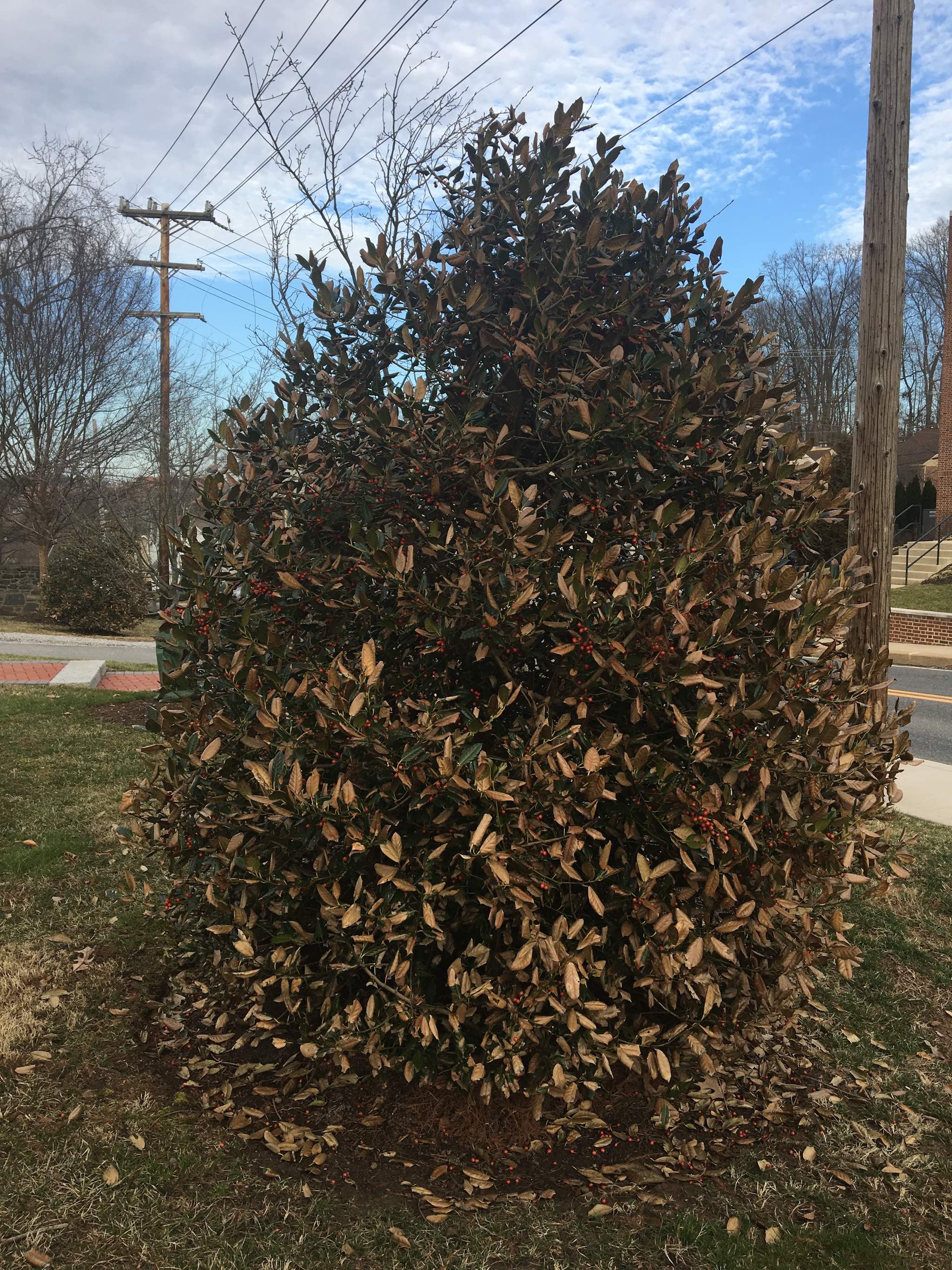Winter Burn
Wed, Mar 21, 2018
Read in 2 minutes
The winter of 2107-2018 was unusually cold for our area. From December 26th through January 8th, the temperature never got higher than 310. That’s a bone-chilling 14 consecutive days below freezing! During that time span, there were five days that never got warmer than 200, and we consistently experienced night-time lows in the single digits.
Extreme cold temperatures like these can have some serious affects on trees and shrubs, particularly evergreens. During the winter, the cold winds blow through evergreens’ foliage, causing them to dry out. The plant reacts by battening down the hatches—closing its stomates, which are the pores that exude moisture. They also try to replace the water they are losing by absorbing more through their roots. In the dead of winter, though, the ground is frozen. Moisture in the soil is ice, and is not available to the plant to take up.
The resulting phenomenon is known as winter burn. The outer edges of the evergreens’ foliar tissue dries up and dies, leaving lots of ugly, brown foliage. While all evergreens can suffer winter burn, the group known as broad-leaf evergreens are particularly susceptible. These are plants like laurels, rhododendrons, boxwoods, and hollies. With more surface area on their leaves than needle conifers like pines, they are more apt to dry out, and the burn is more noticeable. Newly-planted broadleaf evergreens are the most likely to get winter burned. Since their root systems are still establishing, their capacity for taking up water was diminished even before the ground froze.
Luckily, winter burn is rarely fatal to the tree or shrub. Individual branches may appear dead, but if the twigs are scratched, most often there will be live, green tissue. This means that the plant will push new foliage in the spring. Depending on the species, burned foliage may remain on the plant for months, or even a year. New growth will eventually hide the damage.
Verdant recommends reducing the likelihood of winter burn by treating broadleaf evergreens with an anti-dessicant. Anti-dessicants coat the foliage with a thin, invisible layer of polymer that lessens the amount of moisture escaping the leaf. For plants that have already suffered winter burn, be patient. They will eventually leaf-out and look better. If the aesthetic of burned plant material is particularly troublesome, we suggest treatments of our liquid soil amendment, which encourages foliar growth and overall plant vigor by improving the soil microbiology.
